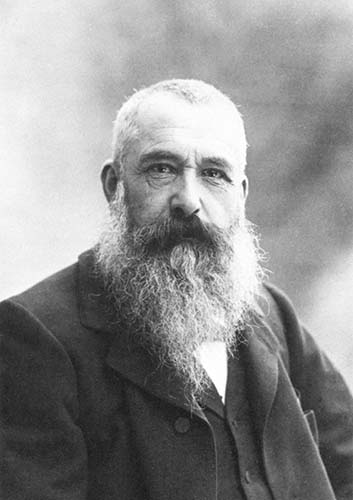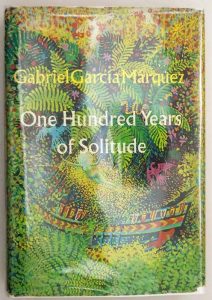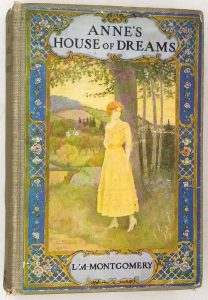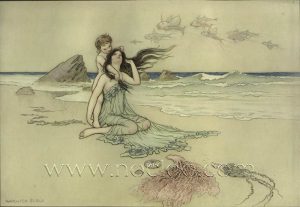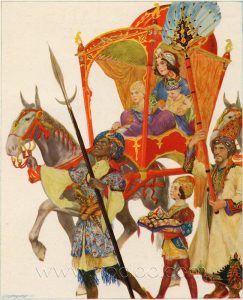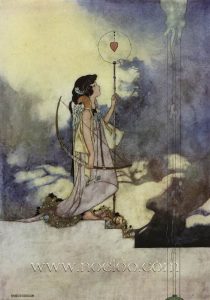Claude Monet - Coast of Normandy (art, paintings)
Claude Monet - Fruit Trees (art, paintings)
Claude Monet - General View Of Rouen From St Catherines Bank (art, paintings)
Claude Monet - Landscape 01 (art, paintings)
Claude Monet - Landscape 02 (art, paintings)
Claude Monet - Landscape with Thunderstorm (art, paintings)
Claude Monet - Marine near Etretat (art, paintings)
Claude Monet - Mount Kolsaas in Norway (art, paintings)
Claude Monet - Norman Farm through the Trees (art, paintings)
Claude Monet - Roses Blooming (art, paintings)
Claude Monet - Setting Sun - Water Lilies (art, paintings)
Claude Monet - The Estuary of the Seine (art, paintings)
Claude Monet - The Pool (art, paintings)
Claude Monet - The Road and the House (art, paintings)
Claude Monet - The Road to Louveciennes - Snow Effect (art, paintings)
Claude Monet - The Seine at Port-Villez (art, paintings)
Claude Monet - The Valley Of Falaise (art, paintings)
Claude Monet - The Village of Vetheuil (art, paintings)
Claude Monet - Water Lilies (art, paintings)
Claude Monet - Waterloo Bridge (art, paintings)
Claude Monet - Weeping Willow (art, paintings)
Claude Monet [1825-26] - The House Seen through the Roses (art, paintings)
Claude Monet [1858] - View At Rouelles Le Havre (art, paintings)
Claude Monet [1861] - Corner of a Studio (art, paintings)
Claude Monet [1862-63] - Still Life With Bottles (art, paintings)
Claude Monet [1862] - Broad Landscape (art, paintings)
Claude Monet [1862] - Trophies of the Hunt (art, paintings)
Claude Monet [1862] - View of the Sea at Sunset (art, paintings)
Claude Monet [1863] - Farmyard in Normandy (art, paintings)
Claude Monet [1864-66] - Sailboats (art, paintings)
Claude Monet [1864] - Boatyard near Honfleur (art, paintings)
Claude Monet [1864] - By the Sea (art, paintings)
Claude Monet [1864] - Dr Leclenche (art, paintings)
Claude Monet [1864] - Etretat (art, paintings)
Claude Monet [1864] - Farm near Honfleur (art, paintings)
Claude Monet [1864] - Hauling a Boat Ashore, Honfleur (art, paintings)
Claude Monet [1864] - Lighthouse at the Hospice (art, paintings)
Claude Monet [1864] - Road in a Forest Fontainebleau (art, paintings)
Claude Monet [1864] - Road to the Saint-Simeon Farm (art, paintings)
Claude Monet [1864] - Seacoast at Saint-Adresse, Sunset (art, paintings)
Claude Monet [1864] - Spring Flowers (art, paintings)
Claude Monet [1864] - The Chapel Notre-Dame-de-Grace at Honfleur (art, paintings)
Claude Monet [1864] - The Coast at Sainte-Adresse (art, paintings)
Claude Monet [1864] - The Lieutenance at Honfleur (art, paintings)
Claude Monet [1864] - The Point of Heve, Honfleur (art, paintings)
Claude Monet [1864] - The Road from Chailly to Fontainebleau (art, paintings)
Claude Monet [1864] - The Road to the Farm of Saint-Simeon 01 (art, paintings)
Claude Monet [1864] - The Road to the Farm of Saint-Simeon 02 (art, paintings)
Claude Monet [1864] - The Street of Bavolle at Honfleur 01 (art, paintings)
Claude Monet [1864] - The Street of Bavolle at Honfleur 02 (art, paintings)
Claude Monet [1864] - Woodbearers in Fontainebleau Forest (art, paintings)
Claude Monet [1865] - Cart on the Snow Covered Road with Saint-Simeon Farm (art, paintings)
Claude Monet [1865] - Farm Yard at Chailly (art, paintings)
Claude Monet [1865] - Fontainebleau Forest (art, paintings)
Claude Monet [1865] - Grainstacks at Chailly at Sunrise (art, paintings)
Claude Monet [1865] - Haystack (art, paintings)
Claude Monet [1865] - Luncheon on the Grass (study) (art, paintings)
Claude Monet [1865] - Luncheon on the Grass, Center Panel (art, paintings)
Claude Monet [1865] - Luncheon on the Grass, Left Panel (art, paintings)
Claude Monet [1865] - Luncheon on the Grass (art, paintings)
Claude Monet [1865] - Path in the Forest (art, paintings)
Claude Monet [1865] - Portrait of Adolphe Monet, the Artist's Father (art, paintings)
Claude Monet [1865] - Saint-Adresse, Beached Sailboat (art, paintings)
Claude Monet [1865] - The Beach at Honfleur (art, paintings)
Claude Monet [1865] - The Bodmer Oak, Fontainebleau (art, paintings)
Claude Monet [1865] - The Bodmer Oak (art, paintings)
Claude Monet [1865] - The Green Wave (art, paintings)
Claude Monet [1865] - The Headland of the Heve at Low Tide (art, paintings)
Claude Monet [1865] - The Road of Chailly in the Fontainbleau Forest (art, paintings)
Claude Monet [1865] - The Road of Chailly (art, paintings)
Claude Monet [1865] - The Seine Estuary at Honfluer (art, paintings)
Claude Monet [1865] - Victor Jacquemont Holding a Parasol (art, paintings)
Claude Monet [1866] - Adolphe Monet Reading in the Garden (art, paintings)
Claude Monet [1866] - Boats in the Port of Honfleur (art, paintings)
Claude Monet [1866] - Camille (also known as The Woman in a Green Dress) (art, paintings)
Claude Monet [1866] - Camille with a Small Dog (art, paintings)
Claude Monet [1866] - Fishing Boats (study) (art, paintings)
Claude Monet [1866] - Garden in Bloom at Sainte-Addresse (art, paintings)
Claude Monet [1866] - Jar of Peaches (art, paintings)
Claude Monet [1866] - Jeanne-Marguerite Lecadre in the Garden (art, paintings)
Claude Monet [1866] - Open Sea (art, paintings)
Claude Monet [1866] - Sailing Boats at Honfleur (art, paintings)
Claude Monet [1866] - Seascape, Night Effect (art, paintings)
Claude Monet [1866] - Seascape (art, paintings)
Claude Monet [1867-68] - Ice Floes on the Seine at Bougival (art, paintings)
Claude Monet [1867-68] - Pears and Grapes (art, paintings)
Claude Monet [1867-68] - Portrait of Jean with a Doll (art, paintings)
Claude Monet [1867] - Garden at Sainte-Adresse (art, paintings)
Claude Monet [1867] - Garden of the Princess (art, paintings)
Claude Monet [1867] - Jean Monet in the Cradle (art, paintings)
Claude Monet [1867] - Portrait of Ernest Cabade (art, paintings)
Claude Monet [1867] - Portrait of Young Man (art, paintings)
Claude Monet [1867] - Quai du Louvre (art, paintings)
Claude Monet [1867] - Regatta at Sainte-Adresse (art, paintings)
Claude Monet [1867] - Saint Germain l'Auxerrois (art, paintings)
Claude Monet [1867] - Saint-Adresse, Fishing Boats on the Shore (art, paintings)
Claude Monet [1867] - Still Life with Pears and Grapes (art, paintings)
Claude Monet [1867] - Stormy Seascape (art, paintings)
Claude Monet [1867] - Street in Saint-Adresse (art, paintings)
Claude Monet [1867] - Taking a Walk on the Cliffs of Sainte-Adresse (art, paintings)
Claude Monet [1867] - The Beach at Sainte-Adresse (art, paintings)
Claude Monet [1867] - The Cabin at Saint-Adresse (art, paintings)
Claude Monet [1867] - The Neve on the Bank of the Seine (art, paintings)
Claude Monet [1867] - The Road in front of Saint-Simeon Farm in Winter (art, paintings)
Claude Monet [1867] - The Road to the Farm of Saint-Simeon in Winter (art, paintings)
Claude Monet [1867] - The Road to the Farm of Saint-Simeon (art, paintings)
Claude Monet [1867] - Women in the Garden (art, paintings)
Claude Monet [1868-69] - The Dinner, An Interior after (art, paintings)
Claude Monet [1868-69] - The Dinner (art, paintings)
Claude Monet [1868-69] - The Manneport, Rough Sea at Etretat (art, paintings)
Claude Monet [1868] - Fishing Boats at Honfleur (art, paintings)
Claude Monet [1868] - Fishing Boats at Sea (art, paintings)
Claude Monet [1868] - Fishing Boats at the Sea (art, paintings)
Claude Monet [1868] - Fishing Boats, Calm Sea (art, paintings)
Claude Monet [1868] - Gestrandetes Boot in Fecamp (art, paintings)
Claude Monet [1868] - Lane in Normandy (art, paintings)
Claude Monet [1868] - Portrait of Jean Monet (art, paintings)
Claude Monet [1868] - Portrait of Madame Gaudibert (art, paintings)
Claude Monet [1868] - River Scene at Bennecourt (art, paintings)
Claude Monet [1868] - The Estuary of the Siene (art, paintings)
Claude Monet [1868] - The Jetty at Le Havre (art, paintings)
Claude Monet [1868] - The Luncheon (art, paintings)
Claude Monet [1868] - The Sea at Saint-Adresse (art, paintings)
Claude Monet [1869] - Bathers at La Grenouillere (art, paintings)
Claude Monet [1869] - Flowers and Fruit (art, paintings)
Claude Monet [1869] - La Grenouillere (art, paintings)
Claude Monet [1869] - Portrait of Jean Monet Wearing a Hat with a Pompon (art, paintings)
Claude Monet [1869] - Red Mullets (art, paintings)
Claude Monet [1869] - The Bridge at Bougival (art, paintings)
Claude Monet [1869] - The Landing State (art, paintings)
Claude Monet [1869] - The Magpie (art, paintings)
Claude Monet [1869] - The Road, Effect of Snow at Sunset (art, paintings)
Claude Monet [1869] - The Seine at Bougival (art, paintings)
Claude Monet [1870-71] - Meditation, Madame Monet Sitting on a Sofa (art, paintings)
Claude Monet [1870-71] - The Beach at Trouville (art, paintings)
Claude Monet [1870] - Camille on the Beach at Trouville (art, paintings)
Claude Monet [1870] - Camille on the Beach (art, paintings)
Claude Monet [1870] - Camille Sitting on the Beach at Trouville (art, paintings)
Claude Monet [1870] - Entrance to the Port of Honfleur (art, paintings)
Claude Monet [1870] - Entrance to the Port of Trouville (art, paintings)
Claude Monet [1870] - Infantry Guards Wandering along the River (art, paintings)
Claude Monet [1870] - Path through the Forest, Snow Effect (art, paintings)
Claude Monet [1870] - Road at Louveciennes, Melting Snow, Sunset (art, paintings)
Claude Monet [1870] - The Beach at Trouville (art, paintings)
Claude Monet [1870] - The Boardwalk on the Beach at Trouville (art, paintings)
Claude Monet [1870] - The Boardwalk on the Beach at Trouville (art, paintings)
Claude Monet [1870] - The Hotel of Roches Noires, Trouville (art, paintings)
Claude Monet [1870] - The Jetty at Le Havre Bad Weather (art, paintings)
Claude Monet [1870] - The Seine at Bougival in the Evening (art, paintings)
Claude Monet [1870] - Train in the Country (art, paintings)
Claude Monet [1871-72] - The Bridge under Repair (art, paintings)
Claude Monet [1871] - Boats at Zaandam (art, paintings)
Claude Monet [1871] - Boats in the Port of London (art, paintings)
Claude Monet [1871] - Green Park in London (art, paintings)
Claude Monet [1871] - Guurtje Van de Stadt (art, paintings)
Claude Monet [1871] - Houses on the Zaan River at Zaandam (art, paintings)
Claude Monet [1871] - Hyde Park, London (art, paintings)
Claude Monet [1871] - Seascape (art, paintings)
Claude Monet [1871] - The Blue House at Zaandam (art, paintings)
Claude Monet [1871] - The Port at Zaandam (art, paintings)
Claude Monet [1871] - The Port of London (art, paintings)
Claude Monet [1871] - The Sailing Boat (art, paintings)
Claude Monet [1871] - The Thames at Westminster (art, paintings)
Claude Monet [1871] - The Voorzaan (art, paintings)
Claude Monet [1871] - View of the Voorzaan (art, paintings)
Claude Monet [1871] - Windmill at Zaandam 01 (art, paintings)
Claude Monet [1871] - Windmill at Zaandam 02 (art, paintings)
Claude Monet [1871] - Windmill near Zaandam (art, paintings)
Claude Monet [1871] - Windmills at Haaldersbroek, Zaandam (art, paintings)
Claude Monet [1871] - Windmills in Holland (art, paintings)
Claude Monet [1871] - Windmills near Zaandam (art, paintings)
Claude Monet [1871] - Zaan at Zaandam 01 (art, paintings)
Claude Monet [1871] - Zaan at Zaandam 02 (art, paintings)
Claude Monet [1871] - Zaandam, Canal (art, paintings)
Claude Monet [1871] - Zaandam, Little Bridge (art, paintings)
Claude Monet [1871] - Zaandam, The Dike, Evening (art, paintings)
Claude Monet [1871] - Zaandam (art, paintings)
Claude Monet [1872] - An Old Street of Chaussee, Argenteuil (art, paintings)
Claude Monet [1872] - Argenteuil Seen from the Small Arm of the Seine (art, paintings)
Claude Monet [1872] - Argenteuil, Late Afternoon (art, paintings)
Claude Monet [1872] - Argenteuil, Seen from the Small Arm of the Seine (art, paintings)
Claude Monet [1872] - Argenteuil, the Hospice (art, paintings)
Claude Monet [1872] - Argenteuil, The Seine (art, paintings)
Claude Monet [1872] - Argenteuil (art, paintings)
Claude Monet [1872] - Boats at Petit-Gennevilliers (art, paintings)
Claude Monet [1872] - Boats at Rouen (art, paintings)
Claude Monet [1872] - Carrieres - Saint-Denis (art, paintings)
Claude Monet [1872] - Festival at Argenteuil (art, paintings)
Claude Monet [1872] - Fog Effect (art, paintings)
Claude Monet [1872] - Grand Quai at Havre (art, paintings)
Claude Monet [1872] - Houses on the Achterzaan (art, paintings)
Claude Monet [1872] - Jean Monet on a Mechanical Horse (art, paintings)
Claude Monet [1872] - Lane in the Vineyards at Argenteuil (art, paintings)
Claude Monet [1872] - Lilacs in the Sun (art, paintings)
Claude Monet [1872] - Lilacs, Grey Weather (art, paintings)
Claude Monet [1872] - Pleasure Boats (art, paintings)
Claude Monet [1872] - Regatta at Argenteuil (art, paintings)
Claude Monet [1872] - Sailboat (art, paintings)
Claude Monet [1872] - Ships Sailing on the Seine at Rouen (art, paintings)
Claude Monet [1872] - Small Boat on the Small Branch of the Seine at Argenteuil (art, paintings)
Claude Monet [1872] - Still Life with Melon (art, paintings)
Claude Monet [1872] - The Basin at Argenteuil (art, paintings)
Claude Monet [1872] - The Boulevard of Heloise in Argenteuil (art, paintings)
Claude Monet [1872] - The Flood (art, paintings)
Claude Monet [1872] - The Garden (art, paintings)
Claude Monet [1872] - The Mount Riboudet in Rouen at Spring (art, paintings)
Claude Monet [1872] - The Pont Neuf (art, paintings)
Claude Monet [1872] - The Promenade at Argenteuil 02 (art, paintings)
Claude Monet [1872] - The Promenade at Argenteuil (art, paintings)
Claude Monet [1872] - The Railroad Station at Argenteuil (art, paintings)
Claude Monet [1872] - The Robec Stream, Rouen (art, paintings)
Claude Monet [1872] - The Seine at Argenteuil (art, paintings)
Claude Monet [1872] - The Seine at Argentuil (art, paintings)
Claude Monet [1872] - The Seine at Petit-Gennevilliers (art, paintings)
Claude Monet [1872] - The Seine at Rouen (La Seine a Rouen) (art, paintings)
Claude Monet [1872] - The Seine at Rouen (art, paintings)
Claude Monet [1872] - The Seine below Rouen (art, paintings)
Claude Monet [1872] - The Seine near Bougival (art, paintings)
Claude Monet [1872] - The Small Arm of the Seine at Argenteuil (art, paintings)
Claude Monet [1872] - The Spring in Argentuil (art, paintings)
Claude Monet [1872] - The Tea Set (art, paintings)
Claude Monet [1872] - The Train (art, paintings)
Claude Monet [1872] - The Wooden Bridge (art, paintings)
Claude Monet [1872] - Trees in Bloom (art, paintings)
Claude Monet [1872] - View of Rouen (art, paintings)
Claude Monet [1872] - View to the Plain of Argenteuil (art, paintings)
Claude Monet [1872] - Woman Reading (art, paintings)
Claude Monet [1873] - Apple Trees Blooming (art, paintings)
Claude Monet [1873] - Apple Trees in Bloom (art, paintings)
Claude Monet [1873] - Autumn Effect at Argenteuil (art, paintings)
Claude Monet [1873] - Autumn on the Seine at Argenteuil (art, paintings)
Claude Monet [1873] - Boats on Rapair (art, paintings)
Claude Monet [1873] - Camille and Jean Monet in the Garden at Argenteuil (art, paintings)
Claude Monet [1873] - Camille Monet at the Window, Argentuile (art, paintings)
Claude Monet [1873] - Camille Monet in the Garden (art, paintings)
Claude Monet [1873] - Camille Monet on a Garden Bench (art, paintings)
Claude Monet [1873] - Cliff at Sainte-Adresse (art, paintings)
Claude Monet [1873] - Fishing Boats at Etretat (art, paintings)
Claude Monet [1873] - Houses at Argenteuil (art, paintings)
Claude Monet [1873] - Impression, Sunrise (art, paintings)
Claude Monet [1873] - La Porte d`Amount, Etretat (art, paintings)
Claude Monet [1873] - Poppies Near Argenteuil (art, paintings)
Claude Monet [1873] - Sailing Boat at Saint-Adresse (art, paintings)
Claude Monet [1873] - Ships in Harbor (art, paintings)
Claude Monet [1873] - Springtime (art, paintings)
Claude Monet [1873] - Sunrise, The Sea (art, paintings)
Claude Monet [1873] - The Artist's House at Argenteuil (art, paintings)
Claude Monet [1873] - The Garden of Monet at Argenteuil (art, paintings)
Claude Monet [1873] - The Havre Museum (art, paintings)
Claude Monet [1873] - The Luncheon (art, paintings)
Claude Monet [1873] - The Port of Le Havre, Night Effect (art, paintings)
Claude Monet [1873] - The Railroad Bridge at Argenteuil (art, paintings)
Claude Monet [1873] - The Red Kerchief, Portrait of Madame Monet (art, paintings)
Claude Monet [1873] - The Seine at Asnieres 01 (art, paintings)
Claude Monet [1873] - The Seine at Asnieres 02 (art, paintings)
Claude Monet [1873] - The Seine at Asnieres 03 (art, paintings)
Claude Monet [1873] - The Sheltered Path (art, paintings)
Claude Monet [1873] - Walk in the Meadows at Argenteuil (art, paintings)
Claude Monet [1874] - Amsterdam in the Snow (art, paintings)
Claude Monet [1874] - Boaters at Argenteuil (art, paintings)
Claude Monet [1874] - Canal in Amsterdam (art, paintings)
Claude Monet [1874] - Canal of Amsterdam in Winter (art, paintings)
Claude Monet [1874] - Fishing Boats Leaving the Harbor, Le Havre (art, paintings)
Claude Monet [1874] - Geese at the Stream (art, paintings)
Claude Monet [1874] - Le Havre, the Harbor (art, paintings)
Claude Monet [1874] - Regatta at Argenteuil (art, paintings)
Claude Monet [1874] - Sailboat at Le Petit-Gennevilliers (art, paintings)
Claude Monet [1874] - Snow at Argenteuil 02 (art, paintings)
Claude Monet [1874] - Snow at Argenteuil (art, paintings)
Claude Monet [1874] - Summer (Meadow at Bezons) (art, paintings)
Claude Monet [1874] - Sunset on the Seine (art, paintings)
Claude Monet [1874] - The Alley of Champ de Foire at Argenteuil (art, paintings)
Claude Monet [1874] - The Banks of the Seine at the Argenteuil Bridge (art, paintings)
Claude Monet [1874] - The Basin of Argenteuil (art, paintings)
Claude Monet [1874] - The Boats Regatta at Argenteuil (art, paintings)
Claude Monet [1874] - The Bridge at Argenteuil, Grey Weather (art, paintings)
Claude Monet [1874] - The Bridge at Argenteuil (art, paintings)
Claude Monet [1874] - The Bridge in Amsterdam (art, paintings)
Claude Monet [1874] - The Bridge over the Seine (art, paintings)
Claude Monet [1874] - The Bridge, Amsterdam (art, paintings)
Claude Monet [1874] - The Promenade at Argenteuil, Sunset (art, paintings)
Claude Monet [1874] - The Promenade near the Bridge of Argenteuil (art, paintings)
Claude Monet [1874] - The Railway Bridge at Argenteuil 2 (art, paintings)
Claude Monet [1874] - The Railway Bridge at Argenteuil 3 (art, paintings)
Claude Monet [1874] - The Railway Bridge at Argenteuil (art, paintings)
Claude Monet [1874] - The Sea at Amsterdam (art, paintings)
Claude Monet [1874] - The Sea, Port in Amsterdam (art, paintings)
Claude Monet [1874] - The Seine at Argenteuil (art, paintings)
Claude Monet [1874] - The Seine near Argenteuil (art, paintings)
Claude Monet [1874] - The Studio Boat (art, paintings)
Claude Monet [1874] - View of Amsterdam (art, paintings)
Claude Monet [1874] - View of the Old Outer Harbor at Le Havre (art, paintings)
Claude Monet [1874] - Windmill on the Onbekende Canal, Amsterdam (art, paintings)
Claude Monet [1874] - Woman Sitting on the Bench (art, paintings)
Claude Monet [1874] - Zaandam, The Dike (art, paintings)
Claude Monet [1874] - Zuiderkerk in Amsterdam (art, paintings)
Claude Monet [1875-76] - The Studio Boat (art, paintings)
Claude Monet [1875] - Argenteuil Yachts 01 (art, paintings)
Claude Monet [1875] - Argenteuil Yachts 02 (art, paintings)
Claude Monet [1875] - Argenteuil Yachts 03 (art, paintings)
Claude Monet [1875] - Boulevard St Denis, Argenteuil, Snow Effect (art, paintings)
Claude Monet [1875] - Camille Embroidering (art, paintings)
Claude Monet [1875] - Coal Dockers (art, paintings)
Claude Monet [1875] - Corner of the Apartment (art, paintings)
Claude Monet [1875] - Frost (art, paintings)
Claude Monet [1875] - Girls in the Garden (art, paintings)
Claude Monet [1875] - In the Garden (art, paintings)
Claude Monet [1875] - Madame Monet and Child (art, paintings)
Claude Monet [1875] - Meadow with Poplars (art, paintings)
Claude Monet [1875] - Poppy Field, Argenteuil (art, paintings)
Claude Monet [1875] - Snow Effect With Setting Sun (art, paintings)
Claude Monet [1875] - Snow Effect, The Boulevard de Pontoise at Argenteuil (art, paintings)
Claude Monet [1875] - Snow Effect, The Street in Argentuil (art, paintings)
Claude Monet [1875] - Snow in Argenteuil (art, paintings)
Claude Monet [1875] - Snow Scene at Argenteuil (art, paintings)
Claude Monet [1875] - The Artist's Family in the Garden (art, paintings)
Claude Monet [1875] - The Promenade at Argenteuil, Winter`s Evening (art, paintings)
Claude Monet [1875] - The Promenade near Argenteuil (art, paintings)
Claude Monet [1875] - The Promenade, Argenteuil (art, paintings)
Claude Monet [1875] - The Promenade, Woman with a Parasol (art, paintings)
Claude Monet [1875] - The Riverbank at Le Petit-Gennevilliers, Sunset (art, paintings)
Claude Monet [1875] - The Riverbank at Petit-Gennevilliers (art, paintings)
Claude Monet [1875] - The Seine at Argenteuil (art, paintings)
Claude Monet [1875] - The Studio Boat (art, paintings)
Claude Monet [1875] - The Summer, Poppy Field (art, paintings)
Claude Monet [1875] - The Tow Path at Argenteuil, Winter (art, paintings)
Claude Monet [1875] - Train in the Snow, Argenteuil (art, paintings)
Claude Monet [1875] - Train in the Snow, the Locomotive (art, paintings)
Claude Monet [1875] - View of Argenteuil in the Snow (art, paintings)
Claude Monet [1875] - White Frost (art, paintings)
Claude Monet [1875] - Woman with a Parasol in the Garden in Argenteuil (art, paintings)
Claude Monet [1876-77] - Portrait of Germaine Hoschede with a Doll (art, paintings)
Claude Monet [1876] - Arriving at Montegeron (art, paintings)
Claude Monet [1876] - Camille Monet in Japanese Costume (art, paintings)
Claude Monet [1876] - Camille Monet in the Garden at the House in Argenteuil (art, paintings)
Claude Monet [1876] - Camille with Green Parasol (art, paintings)
Claude Monet [1876] - Evening at Argenteuil (art, paintings)
Claude Monet [1876] - Gladioluses (art, paintings)
Claude Monet [1876] - In the Meadow (art, paintings)
Claude Monet [1876] - Parc Monceau, Paris (art, paintings)
Claude Monet [1876] - Parc Monceau (art, paintings)
Claude Monet [1876] - Relaxing in the Garden, Argenteuil (art, paintings)
Claude Monet [1876] - Saint-Lazare Station, Exterior (art, paintings)
Claude Monet [1876] - The Artist's House in Argenteuil (art, paintings)
Claude Monet [1876] - The Ball Shaped Tree, Argenteuil (art, paintings)
Claude Monet [1876] - The Banks of The Seine in Autumn (art, paintings)
Claude Monet [1876] - The Beach at Saint-Adresse (art, paintings)
Claude Monet [1876] - The Corner of the Garden at Montgeron (art, paintings)
Claude Monet [1876] - The Garden (Le Jardin) (art, paintings)
Claude Monet [1876] - The Garden Gate at Vetheuil (art, paintings)
Claude Monet [1876] - The Pond at Montgeron 2 (art, paintings)
Claude Monet [1876] - The Pond at Montgeron (art, paintings)
Claude Monet [1876] - The Reeds (study) (art, paintings)
Claude Monet [1876] - The Shoot (art, paintings)
Claude Monet [1876] - The Small Arm of the Seine at Argenteuil (art, paintings)
Claude Monet [1876] - The Studio Boat (art, paintings)
Claude Monet [1876] - The Tuileries (study) (art, paintings)
Claude Monet [1876] - The Tuileries (study) (art, paintings)
Claude Monet [1876] - The Turkeys (art, paintings)
Claude Monet [1876] - The Willows on the River (art, paintings)
Claude Monet [1876] - Woman Sitting in a Garden (art, paintings)
Claude Monet [1876] - Wood Lane (art, paintings)
Claude Monet [1877] - Argenteuil, Flowers by the Riverbank (art, paintings)
Claude Monet [1877] - Field at Gennevilliers (art, paintings)
Claude Monet [1877] - Riverbank at Argenteuil (art, paintings)
Claude Monet [1877] - Saint-Lazare Station, Arrival of a Train (art, paintings)
Claude Monet [1877] - Saint-Lazare Station, Exterior View 2 (art, paintings)
Claude Monet [1877] - Saint-Lazare Station, Exterior View 3 (art, paintings)
Claude Monet [1877] - Saint-Lazare Station, Exterior View (art, paintings)
Claude Monet [1877] - Saint-Lazare Station, Exterior (art, paintings)
Claude Monet [1877] - Saint-Lazare Station, Normandy Train (art, paintings)
Claude Monet [1877] - Saint-Lazare Station, Sunlight Effect (art, paintings)
Claude Monet [1877] - Saint-Lazare Station, The Pont de l'Europe (art, paintings)
Claude Monet [1877] - Saint-Lazare Station, the Western Region Goods Sheds (art, paintings)
Claude Monet [1877] - Saint-Lazare Station, Track Coming out (art, paintings)
Claude Monet [1877] - The Garden, Hollyhocks (art, paintings)
Claude Monet [1877] - The Seine at Argenteuil (art, paintings)
Claude Monet [1878-79] - Portrait of Michel Monet (art, paintings)
Claude Monet [1878-79] - Vetheuil, the Church, Snow (art, paintings)
Claude Monet [1878] - Apple Trees near Vetheuil (art, paintings)
Claude Monet [1878] - Apple Trees on the Chantemesle Hill (art, paintings)
Claude Monet [1878] - Arm of the Seine near Vetheuil (art, paintings)
Claude Monet [1878] - Banks of the Seine at Lavacourt (art, paintings)
Claude Monet [1878] - Bouquet of Gadiolas, Lilies and Dasies (art, paintings)
Claude Monet [1878] - Chrysanthemums (art, paintings)
Claude Monet [1878] - Farmyard (art, paintings)
Claude Monet [1878] - Flowers in a Pot (art, paintings)
Claude Monet [1878] - Jean-Pierre Hoschede, called 'Bebe Jean' (art, paintings)
Claude Monet [1878] - Morning on the Seine, near Vetheuil (art, paintings)
Claude Monet [1878] - Parc Monceau 01 (art, paintings)
Claude Monet [1878] - Parc Monceau 02 (art, paintings)
Claude Monet [1878] - Parc Monceau 03 (art, paintings)
Claude Monet [1878] - The Arm of the Seine (art, paintings)
Claude Monet [1878] - The Avenue (art, paintings)
Claude Monet [1878] - The Banks of the Seine at Lavacourt (art, paintings)
Claude Monet [1878] - The Banks of the Seine, Ile de la Grande-Jatte (art, paintings)
Claude Monet [1878] - The Banks of the Seine, Lavacourt 02 (art, paintings)
Claude Monet [1878] - The Banks of the Seine, Lavacourt (art, paintings)
Claude Monet [1878] - The Isle Grande-Jatte on the Siene (art, paintings)
Claude Monet [1878] - The Isle Grande-Jatte through the Poplars (art, paintings)
Claude Monet [1878] - The Isle Grande-Jatte (art, paintings)
Claude Monet [1878] - The Road at Vetheuil (art, paintings)
Claude Monet [1878] - The Rue Montargueil with Flags (art, paintings)
Claude Monet [1878] - The Rue Montorgueil, Paris, Festival of June 30 (art, paintings)
Claude Monet [1878] - The Seine at Lavacourt (art, paintings)
Claude Monet [1878] - The Seine near Vetheuil, Stormy Weather (art, paintings)
Claude Monet [1878] - The Seine near Vetheuil (art, paintings)
Claude Monet [1878] - The Small Arm of the Seine at Mosseaux, Evening (art, paintings)
Claude Monet [1878] - The Small Arm of the Seine at Mosseaux (art, paintings)
Claude Monet [1878] - The Steps (art, paintings)
Claude Monet [1878] - The Village of Lavacourt (art, paintings)
Claude Monet [1878] - Tow Path at Lavacourt (art, paintings)
Claude Monet [1878] - Understory, Sun Effect (art, paintings)
Claude Monet [1878] - Vase of Chrysanthemums (art, paintings)
Claude Monet [1878] - Vetheuil, The Church (art, paintings)
Claude Monet [1879-80] - Winter on the Seine, Lavacourt (art, paintings)
Claude Monet [1879-80] - Winter Sun, Lavacourt (art, paintings)
Claude Monet [1879] - Entering the Village of Vetheuil in Winter (art, paintings)
Claude Monet [1879] - Fruit Basket with Apples and Grapes (art, paintings)
Claude Monet [1879] - Leon Peltier (art, paintings)
Claude Monet [1879] - Nasturtias in a Blue Vase (art, paintings)
Claude Monet [1879] - Orchard in Bloom (art, paintings)
Claude Monet [1879] - Plum Trees in Blossom at Vetheuil (art, paintings)
Claude Monet [1879] - Plums Blossom (art, paintings)
Claude Monet [1879] - Poppy Field near Vetheuil (art, paintings)
Claude Monet [1879] - Still Life - Apples and Grapes (art, paintings)
Claude Monet [1879] - Still Life with Apples and Grapes (art, paintings)
Claude Monet [1879] - Still Life with Melon (art, paintings)
Claude Monet [1879] - The Bend of the Seine at Lavacourt, Winter (art, paintings)
Claude Monet [1879] - The Road in Vetheuil in Winter (art, paintings)
Claude Monet [1879] - The Seine at Lavacourt, Effect of Snow (art, paintings)
Claude Monet [1879] - The Seine at Lavacourt, Winter (art, paintings)
Claude Monet [1879] - The Seine at Lavacourt (art, paintings)
Claude Monet [1879] - The Seine at Vetheuil 2 (art, paintings)
Claude Monet [1879] - The Seine at Vetheuil 3 (art, paintings)
Claude Monet [1879] - The Seine at Vetheuil (art, paintings)
Claude Monet [1879] - The Seine near Vetheuil (art, paintings)
Claude Monet [1879] - Tree in Blossom near Vetheuil (art, paintings)
Claude Monet [1879] - Vetheuil 01 (art, paintings)
Claude Monet [1879] - Vetheuil 02 (art, paintings)
Claude Monet [1879] - Vetheuil in the Fog (art, paintings)
Claude Monet [1879] - Vetheuil in Winter (art, paintings)
Claude Monet [1879] - Vetheuil near Lavacourt (art, paintings)
Claude Monet [1879] - Vetheuil, Flowering Plum Trees (art, paintings)
Claude Monet [1879] - Vetheuil, Paysage (art, paintings)
Claude Monet [1879] - Vetheuil, The Church in Winter (art, paintings)
Claude Monet [1880-81] - The Artist's Garden at Vetheuil (art, paintings)
Claude Monet [1880] - Andre Lauvray (art, paintings)
Claude Monet [1880] - Apple Trees in Blossom by the Water 01 (art, paintings)
Claude Monet [1880] - Apple Trees in Blossom by the Water 02 (art, paintings)
Claude Monet [1880] - Asters (art, paintings)
Claude Monet [1880] - Blanche Hoschede (art, paintings)
Claude Monet [1880] - Bouquet of Sunflowers (art, paintings)
Claude Monet [1880] - Breakup of Ice, Grey Weather (art, paintings)
Claude Monet [1880] - Breakup of Ice, Lavacourt, Grey Weather (art, paintings)
Claude Monet [1880] - Breakup of Ice (art, paintings)
Claude Monet [1880] - Cliffs of Les Petites-Dalles (art, paintings)
Claude Monet [1880] - Floating Ice on the Seine 01 (art, paintings)
Claude Monet [1880] - Floating Ice on the Seine 02 (art, paintings)
Claude Monet [1880] - Flowers on the Banks of Seine near Vetheuil (art, paintings)
Claude Monet [1880] - Frost near Vetheuil (art, paintings)
Claude Monet [1880] - Ice Floes on Seine (art, paintings)
Claude Monet [1880] - Isle of Flowers on the Seine near Vetheuil (art, paintings)
Claude Monet [1880] - Jerusalem Artichokes (art, paintings)
Claude Monet [1880] - Landscape at Vetheuil (art, paintings)
Claude Monet [1880] - Lane in the Poppy Fields, Ile Saint-Martin (art, paintings)
Claude Monet [1880] - Late Afternoon in Vetheuil (art, paintings)
Claude Monet [1880] - Poppy Field near Vetheuil (art, paintings)
Claude Monet [1880] - Portrait of Jean Monet (art, paintings)
Claude Monet [1880] - Portrait of Jeanne Serveau (art, paintings)
Claude Monet [1880] - Portrait of Michel with Hat and Pompom (art, paintings)
Claude Monet [1880] - River Thawing near Vetheuil (art, paintings)
Claude Monet [1880] - Road of La Roche-Guyon (art, paintings)
Claude Monet [1880] - Spring Effect, Landscape near Vetheuil (art, paintings)
Claude Monet [1880] - Springtime in Vetheuil (art, paintings)
Claude Monet [1880] - Springtime (art, paintings)
Claude Monet [1880] - Still Life with Pears and Grapes (art, paintings)
Claude Monet [1880] - Sunset on the Seine at Lavacourt, Winter Effect (art, paintings)
Claude Monet [1880] - Sunset on the Seine at Lavacourt (art, paintings)
Claude Monet [1880] - Sunset on the Seine in Winter (art, paintings)
Claude Monet [1880] - The Artist's Garden at Vetheuil (art, paintings)
Claude Monet [1880] - The Banks of the Seine near Jeufosse (Eure) (art, paintings)
Claude Monet [1880] - The Frost (art, paintings)
Claude Monet [1880] - The Hamlet of Chantemesie at the Foot of the Rock (art, paintings)
Claude Monet [1880] - The Hills of Vetheuil (art, paintings)
Claude Monet [1880] - The Meadow (art, paintings)
Claude Monet [1880] - The Plate with Apples (art, paintings)
Claude Monet [1880] - The Road from Vetheuil (art, paintings)
Claude Monet [1880] - The Road to Vetheuil (art, paintings)
Claude Monet [1880] - The Seine and the Chaantemesle Hills (art, paintings)
Claude Monet [1880] - The Seine and the Chaantemesle (art, paintings)
Claude Monet [1880] - The Seine at Lavacourt (art, paintings)
Claude Monet [1880] - The Seine at Vetheuil (art, paintings)
Claude Monet [1880] - The Willows (art, paintings)
Claude Monet [1880] - The Winter, near Lavacourt (art, paintings)
Claude Monet [1880] - Vase of Malva Flowers (art, paintings)
Claude Monet [1880] - Vetheuil in Summer (art, paintings)
Claude Monet [1880] - Vetheuil Seen from Ile Saint Martin (art, paintings)
Claude Monet [1880] - Vetheuil under the Sun (art, paintings)
Claude Monet [1880] - Vetheuil, The Church (art, paintings)
Claude Monet [1880] - Vetheuil, The Small Arm of the Seine (art, paintings)
Claude Monet [1880] - Vetheuil (art, paintings)
Claude Monet [1880] - View of Vetheuil 2 (art, paintings)
Claude Monet [1880] - View of Vetheuil (art, paintings)
Claude Monet [1880] - View over Vetheuil (art, paintings)
Claude Monet [1880] - Woman Sitting under the Willows (art, paintings)
Claude Monet [1881] - Alice Hoschede in the Garden (art, paintings)
Claude Monet [1881] - At the Meadow, Vetheuil (art, paintings)
Claude Monet [1881] - At the Terrace at Vetheuil (art, paintings)
Claude Monet [1881] - Boat at Low Tide at Fecamp (art, paintings)
Claude Monet [1881] - Boats Lying at Low Tide at Facamp (art, paintings)
Claude Monet [1881] - Calm Weather, Fecamp (art, paintings)
Claude Monet [1881] - Cliff at Fecamp (art, paintings)
Claude Monet [1881] - Cliff at Grainval near Fecamp (art, paintings)
Claude Monet [1881] - Cliff near Fecamp (art, paintings)
Claude Monet [1881] - Cliffs of Les Petites-Dalles (art, paintings)
Claude Monet [1881] - Cliffs of Varengeville, Gust of Wind (art, paintings)
Claude Monet [1881] - Evening Effect of the Seine (art, paintings)
Claude Monet [1881] - Fecamp, by the Sea (art, paintings)
Claude Monet [1881] - Flood of the Seine at Vetheuil (art, paintings)
Claude Monet [1881] - Flowers at Vetheuil (art, paintings)
Claude Monet [1881] - Flowers Beds at Vetheuil (art, paintings)
Claude Monet [1881] - Gladiolus 01 (art, paintings)
Claude Monet [1881] - Gladiolus 02 (art, paintings)
Claude Monet [1881] - Landscape near Vetheuil (art, paintings)
Claude Monet [1881] - Landscape on the Ile Saint-Martin (art, paintings)
Claude Monet [1881] - Lavacourt, Sun and Snow (art, paintings)
Claude Monet [1881] - Monet's Garden at Vetheuil (art, paintings)
Claude Monet [1881] - Morning by the Sea (art, paintings)
Claude Monet [1881] - On the Cliff at Fecamp (art, paintings)
Claude Monet [1881] - On the Coast at Trouville (art, paintings)
Claude Monet [1881] - Path on the Island of Saint Martin, Vetheuil (art, paintings)
Claude Monet [1881] - Poppy Field (art, paintings)
Claude Monet [1881] - Rough Sea (art, paintings)
Claude Monet [1881] - Sea at Fecamp, View from the Cliffs (art, paintings)
Claude Monet [1881] - Sea Study (art, paintings)
Claude Monet [1881] - Seascape near Fecamp (art, paintings)
Claude Monet [1881] - Spot on the Banks of the Seine (art, paintings)
Claude Monet [1881] - The 'Pyramids', Cliffs at Belle-Ile (art, paintings)
Claude Monet [1881] - The Artist's Garden at Vetheuil (art, paintings)
Claude Monet [1881] - The Banks of the Seine at Vetheuil (art, paintings)
Claude Monet [1881] - The Beach at Fecamp (art, paintings)
Claude Monet [1881] - The Church of Vetheuil (art, paintings)
Claude Monet [1881] - The Flood (art, paintings)
Claude Monet [1881] - The Garden Gate at Vetheuil (art, paintings)
Claude Monet [1881] - The Garden Gate (art, paintings)
Claude Monet [1881] - The Hut in Trouville, Low Tide (art, paintings)
Claude Monet [1881] - The Sea at Fecamp (art, paintings)
Claude Monet [1881] - The Sea Seen from the Cliffs of Fecamp (art, paintings)
Claude Monet [1881] - The Seine at Vetheuil (art, paintings)
Claude Monet [1881] - The Seine, View from Heights of Chantemesle (art, paintings)
Claude Monet [1881] - The Spring at Vetheuil (art, paintings)
Claude Monet [1881] - The Steps at Vetheuil (art, paintings)
Claude Monet [1881] - The Thaw at Vetheuil (art, paintings)
Claude Monet [1881] - The Wheat Field (art, paintings)
Claude Monet [1881] - Vetheuil, Meadow under the Water (art, paintings)
Claude Monet [1881] - Vetheuil, the Flood (art, paintings)
Claude Monet [1881] - View of Vetheuil, Ice Floes (art, paintings)
Claude Monet [1881] - View over Vetheuil (art, paintings)
Claude Monet [1881] - View Taken from Greinval (art, paintings)
Claude Monet [1881] - Waves Breaking (art, paintings)
Claude Monet [1882-83] - Boats in the Port of Le Havre (art, paintings)
Claude Monet [1882-83] - Etretat, Sailing Boats under the Sunset (art, paintings)
Claude Monet [1882-85 02] - Narcisses (art, paintings)
Claude Monet [1882-85] - Basket of Graphes, Quinces and Pears (art, paintings)
Claude Monet [1882-85] - Narcisses (art, paintings)
Claude Monet [1882-85] - Vase of Chrysanthemums (art, paintings)
Claude Monet [1882-85] - White Azaleas in a Pot (art, paintings)
Claude Monet [1882] - Anglers on the Seine at Poissy (art, paintings)
Claude Monet [1882] - Beach and Cliffs at Pourville, Morning Effect (art, paintings)
Claude Monet [1882] - Boats on the Beach at Pourville, Low Tide (art, paintings)
Claude Monet [1882] - Chrysanthemums (art, paintings)
Claude Monet [1882] - Cliff at Dieppe (art, paintings)
Claude Monet [1882] - Cliff at Grainval (art, paintings)
Claude Monet [1882] - Cliff near Dieppe (art, paintings)
Claude Monet [1882] - Cliff near Pourville (art, paintings)
Claude Monet [1882] - Cliffs and Sailboats at Pourville (art, paintings)
Claude Monet [1882] - Cliffs at Pourville in the Fog (art, paintings)
Claude Monet [1882] - Cliffs near Dieppe (art, paintings)
Claude Monet [1882] - Cliffs near Pourville (art, paintings)
Claude Monet [1882] - Cliffs of Varengeville, Gust of Wind (art, paintings)
Claude Monet [1882] - Cliffs Walk at Pourville (art, paintings)
Claude Monet [1882] - Clifftop Walk at Pourville (art, paintings)
Claude Monet [1882] - Customs House at Varengaville (art, paintings)
Claude Monet [1882] - Customs House, Varengeville (art, paintings)
Claude Monet [1882] - Customs House (art, paintings)
Claude Monet [1882] - Dieppe (art, paintings)
Claude Monet [1882] - Edge of the Cliff at Pourville (art, paintings)
Claude Monet [1882] - Edge of the Cliff, Pourville (art, paintings)
Claude Monet [1882] - Fisherman`s House in Petit-Ailly (art, paintings)
Claude Monet [1882] - Fisherman's Cottage at Varengeville (art, paintings)
Claude Monet [1882] - Fisherman's House at Varengeville (art, paintings)
Claude Monet [1882] - Fishing Boats at Pourville (art, paintings)
Claude Monet [1882] - Fishing Boats at the Sea near Pourville (art, paintings)
Claude Monet [1882] - Fishing Boats by the Beach and the Cliffs of Pourville (art, paintings)
Claude Monet [1882] - Fishing Nets at Pourville (art, paintings)
Claude Monet [1882] - Floating Ice (art, paintings)
Claude Monet [1882] - Head of the Dog (art, paintings)
Claude Monet [1882] - L'Ally Point, Low Tide (art, paintings)
Claude Monet [1882] - Le Mere Paul (Eugenie Graff, Madame Paul Graff) (art, paintings)
Claude Monet [1882] - Low Tide at Pourville 02 (art, paintings)
Claude Monet [1882] - Low Tide at Pourville, Misty Weather (art, paintings)
Claude Monet [1882] - Low Tide at Pourville (art, paintings)
Claude Monet [1882] - Low Tide at Varengeville 02 (art, paintings)
Claude Monet [1882] - Low Tide at Varengeville (art, paintings)
Claude Monet [1882] - Path at La Cavee, Pourville (art, paintings)
Claude Monet [1882] - Path at Pourville 02 (art, paintings)
Claude Monet [1882] - Path at Pourville (art, paintings)
Claude Monet [1882] - Path at Varengeville (art, paintings)
Claude Monet [1882] - Peaches (art, paintings)
Claude Monet [1882] - Portrait of Pere Paul (art, paintings)
Claude Monet [1882] - Pourville, near Dieppe (art, paintings)
Claude Monet [1882] - Pourville, Sunset (art, paintings)
Claude Monet [1882] - Pourville (art, paintings)
Claude Monet [1882] - Sailboats near the Sea Coast at Pourville (art, paintings)
Claude Monet [1882] - Shadows on the Sea at Pourville (art, paintings)
Claude Monet [1882] - Sunset at Pourville (art, paintings)
Claude Monet [1882] - Sunset on the Sea at Pourville (art, paintings)
Claude Monet [1882] - Sunset, Foggy Weather, Pourville (art, paintings)
Claude Monet [1882] - The 'Fonds' at Varengeville (art, paintings)
Claude Monet [1882] - The Beach at Pourville, Sunset (art, paintings)
Claude Monet [1882] - The Beach at Pourville (art, paintings)
Claude Monet [1882] - The Church at Varengaville, Grey Weather (art, paintings)
Claude Monet [1882] - The Church at Varengeville 02 (art, paintings)
Claude Monet [1882] - The Church at Varengeville and the Gorge of Les Moutiers (art, paintings)
Claude Monet [1882] - The Church at Varengeville, against the Sunset (art, paintings)
Claude Monet [1882] - The Church at Varengeville, Morning Effect (art, paintings)
Claude Monet [1882] - The Church at Varengeville (art, paintings)
Claude Monet [1882] - The Cliffs, Grey Weather (art, paintings)
Claude Monet [1882] - The Coast of Varengeville (art, paintings)
Claude Monet [1882] - The Custom`s House at Varengaville (art, paintings)
Claude Monet [1882] - The Custom`s House (art, paintings)
Claude Monet [1882] - The Effect of Fog near Dieppe (art, paintings)
Claude Monet [1882] - The Firs at Varengeville (art, paintings)
Claude Monet [1882] - The Galettes (art, paintings)
Claude Monet [1882] - The Limes at Poissy (art, paintings)
Claude Monet [1882] - The Manneport (art, paintings)
Claude Monet [1882] - The Passage to the Sea near Pourville (art, paintings)
Claude Monet [1882] - The Port of Dieppe, Evening (art, paintings)
Claude Monet [1882] - The Rocks at Pourville, Low Tide (art, paintings)
Claude Monet [1882] - The Sea at Pourville (art, paintings)
Claude Monet [1882] - The Seacoast of Pourville, Low Tide (art, paintings)
Claude Monet [1882] - The Sunken Road in the Cliff at Varangeville (art, paintings)
Claude Monet [1882] - The Undergrowth in the Forest of Saint-Germain (art, paintings)
Claude Monet [1882] - The Valley of the Scie at Pouville (art, paintings)
Claude Monet [1882] - Two Anglers (art, paintings)
Claude Monet [1882] - Vase of Chrysanthemums (art, paintings)
Claude Monet [1882] - Vase of Peonies (art, paintings)
Claude Monet [1882] - View from the Cliff at Pourville, Bright Weather (art, paintings)
Claude Monet [1882] - View over the Sea, Cliff of Pourville (art, paintings)
Claude Monet [1882] - Waves and Rocks at Pourville (art, paintings)
Claude Monet [1883 ] - Stormy Seascape (art, paintings)
Claude Monet [1883-85] - Etretat, Aiguille and Porte d`Aval, Sunset (art, paintings)
Claude Monet [1883] - Boats on the Beach at Etretat (art, paintings)
Claude Monet [1883] - Boats on the Beach (art, paintings)
Claude Monet [1883] - Boulevard des Capucines 01 (art, paintings)
Claude Monet [1883] - Boulevard des Capucines 02 (art, paintings)
Claude Monet [1883] - Branch of Lemons (art, paintings)
Claude Monet [1883] - By the River at Vernon (art, paintings)
Claude Monet [1883] - Christmas Roses (art, paintings)
Claude Monet [1883] - Cliffs of the Porte d'Aval, Grey Weather (art, paintings)
Claude Monet [1883] - Cobeas (art, paintings)
Claude Monet [1883] - Dahlias 2 (art, paintings)
Claude Monet [1883] - Dahlias (art, paintings)
Claude Monet [1883] - Effect of Waves at Etretat (art, paintings)
Claude Monet [1883] - Etretat, Sunset (art, paintings)
Claude Monet [1883] - Etretat, the Beach and the Porte d'Aval (art, paintings)
Claude Monet [1883] - Islets at Port-Villez (art, paintings)
Claude Monet [1883] - Landscape at Port-Villez (art, paintings)
Claude Monet [1883] - Landscape near Montecarlo (art, paintings)
Claude Monet [1883] - Luncheon under the Canopy (art, paintings)
Claude Monet [1883] - Morning at Etretat (art, paintings)
Claude Monet [1883] - Peaches (art, paintings)
Claude Monet [1883] - Port d`Aval, Rough Sea (art, paintings)
Claude Monet [1883] - Red and Pink Poppies (art, paintings)
Claude Monet [1883] - Red Azalias in a Pot (art, paintings)
Claude Monet [1883] - The Beach at Etretat (art, paintings)
Claude Monet [1883] - The Manneport, Cliff at Etretat, Sunset (art, paintings)
Claude Monet [1883] - The Manneport, Cliff at Etretat (art, paintings)
Claude Monet [1883] - The Manneport, Etretat, Rough Sea (art, paintings)
Claude Monet [1883] - The Manneport, Rock Arch West of Etretat (art, paintings)
Claude Monet [1883] - The Manneport, Seen from Below (art, paintings)
Claude Monet [1883] - The Needle of Etretat, Low Tide (art, paintings)
Claude Monet [1883] - The Road to Monte Carlo (art, paintings)
Claude Monet [1883] - The Tow Path at Granval (detail) (art, paintings)
Claude Monet [1883] - The Tow Path at Granval (art, paintings)
Claude Monet [1883] - Three Pots of Tulips (art, paintings)
Claude Monet [1883] - Vase of Dahlias (art, paintings)
Claude Monet [1883] - Vase of Poppies (art, paintings)
Claude Monet [1883] - View of the Church at Vernon (art, paintings)
Claude Monet [1883] - White Poppy (art, paintings)
Claude Monet [1884 (Christie`s version)] - Olive Tree Wood in the Moreno Garden (art, paintings)
Claude Monet [1884-86] - The Manneport, Etretat - Amont Cliff, Rough Weather (art, paintings)
Claude Monet [1884] - At Petit-Dalles (art, paintings)
Claude Monet [1884] - Banks of the Seine at Jenfosse - Clear Weather (art, paintings)
Claude Monet [1884] - Banks of the Seine at Jeufosse, Autumn (art, paintings)
Claude Monet [1884] - Bordighera, Italy (art, paintings)
Claude Monet [1884] - Bordighera, the House of Gardener (art, paintings)
Claude Monet [1884] - Bordighera, View (art, paintings)
Claude Monet [1884] - Bordighera (art, paintings)
Claude Monet [1884] - Branch of Lemons (art, paintings)
Claude Monet [1884] - Branch of Orange Bearing Fruit (art, paintings)
Claude Monet [1884] - Burgo Marina at Bordighera (art, paintings)
Claude Monet [1884] - Cap Martin 01 (art, paintings)
Claude Monet [1884] - Cap Martin 02 (art, paintings)
Claude Monet [1884] - Cap Martin 03 (art, paintings)
Claude Monet [1884] - Cliffs of Les Petites-Dalles (art, paintings)
Claude Monet [1884] - Dolceacqua 2, Castle (art, paintings)
Claude Monet [1884] - Dolceacqua, Bridge (art, paintings)
Claude Monet [1884] - Dolceacqua, Castle (art, paintings)
Claude Monet [1884] - Fishing Boats on the Beach at Etretat (art, paintings)
Claude Monet [1884] - Garden in Bordighera, Morning Effect (art, paintings)
Claude Monet [1884] - Grove of Olive Trees in Bordighera (art, paintings)
Claude Monet [1884] - Haystacks at Giverny (art, paintings)
Claude Monet [1884] - Haystacks, Overcast Day (art, paintings)
Claude Monet [1884] - Meton Seen from Cap Martin (art, paintings)
Claude Monet [1884] - Monte Carlo Seen from Roquebrune (art, paintings)
Claude Monet [1884] - Monte-Carlo, View from Roquebrune (art, paintings)
Claude Monet [1884] - Olive Tree Wood in the Moreno Garden (art, paintings)
Claude Monet [1884] - Olive Trees (Study) (art, paintings)
Claude Monet [1884] - Olive Trees in Bordighera (art, paintings)
Claude Monet [1884] - Palm Tree at Bordighera (art, paintings)
Claude Monet [1884] - Palm Trees at Bordighera 2 (art, paintings)
Claude Monet [1884] - Palm Trees at Bordighera (art, paintings)
Claude Monet [1884] - Rowboat on the Seine at Jeufosse (art, paintings)
Claude Monet [1884] - Small Country Farm in Bordighera (art, paintings)
Claude Monet [1884] - Strada Romana in Bordighera (art, paintings)
Claude Monet [1884] - The Arm of the Seine at Jeufosse, Afternoon (art, paintings)
Claude Monet [1884] - The Bridge at Argenteuil (art, paintings)
Claude Monet [1884] - The Corniche of Monaco (art, paintings)
Claude Monet [1884] - The Moreno Garden at Bordighera (art, paintings)
Claude Monet [1884] - The Red Road at Cap Martin, near Menton (art, paintings)
Claude Monet [1884] - The Red Road near Menton (art, paintings)
Claude Monet [1884] - The River of Epte at Giverny, Summer (art, paintings)
Claude Monet [1884] - The Seine at Jeufosse (art, paintings)
Claude Monet [1884] - The Seine at Port-Villez (art, paintings)
Claude Monet [1884] - The Small Arm of Jeufosse, Autumn (art, paintings)
Claude Monet [1884] - The Valley of Sasso, Blue Effect (art, paintings)
Claude Monet [1884] - The Valley of Sasso, Bordighera (art, paintings)
Claude Monet [1884] - The Valley of Sasso, Sunshine (art, paintings)
Claude Monet [1884] - The Valley of Sasso (art, paintings)
Claude Monet [1884] - The Valley of the Nervia with Dolceacqua (art, paintings)
Claude Monet [1884] - The Valley of the Nervia (art, paintings)
Claude Monet [1884] - Under the Lemon Trees (art, paintings)
Claude Monet [1884] - Valle Bouna near Bordighera (art, paintings)
Claude Monet [1884] - View of Ventimiglia (art, paintings)
Claude Monet [1884] - Villas at Bordighera 01 (art, paintings)
Claude Monet [1884] - Villas at Bordighera 02 (art, paintings)
Claude Monet [1884] - Villas at Bordighera 03 (art, paintings)
Claude Monet [1885 -The Rock Needle and Porte d'Aval Etretat (art, paintings)
Claude Monet [1885-86] - Snow Effect at Limetz (art, paintings)
Claude Monet [1885-86] - The Manneport, Etretat in the Rain (art, paintings)
Claude Monet [1885-86] - The Rock Needle Seen through the Porte d'Aval (art, paintings)
Claude Monet [1885] - Anemones in Pot (art, paintings)
Claude Monet [1885] - Anemonies (art, paintings)
Claude Monet [1885] - Bennecourt (art, paintings)
Claude Monet [1885] - Boat on the Beach (art, paintings)
Claude Monet [1885] - Boats on the Beach at Etretat (art, paintings)
Claude Monet [1885] - Boats on the Beach (art, paintings)
Claude Monet [1885] - Cliffs at Amont (art, paintings)
Claude Monet [1885] - Cliffs of the Porte d'Aval (art, paintings)
Claude Monet [1885] - Etretat, Cliff of Aval, Sunset (art, paintings)
Claude Monet [1885] - Etretat, Cliff of Aval (art, paintings)
Claude Monet [1885] - Etretat, the Aval Door, Fishing Boats Leaving the Harbour (art, paintings)
Claude Monet [1885] - Etretat, the Needle Rock and Porte d'Aval (art, paintings)
Claude Monet [1885] - Fishing Boats (art, paintings)
Claude Monet [1885] - Flowering Pear Tree (art, paintings)
Claude Monet [1885] - Haystack at Giverny (art, paintings)
Claude Monet [1885] - Haystack (art, paintings)
Claude Monet [1885] - Haystacks at Giverny (art, paintings)
Claude Monet [1885] - Houses at Falaise in the Fog (art, paintings)
Claude Monet [1885] - Landscape at Port-Villez (art, paintings)
Claude Monet [1885] - Meadow with Haystacks near Giverny (art, paintings)
Claude Monet [1885] - Morning on the Seine (art, paintings)
Claude Monet [1885] - Path at Giverny (art, paintings)
Claude Monet [1885] - Poppy Field at Giverny (art, paintings)
Claude Monet [1885] - Poppy Field in a Hollow near Giverny (art, paintings)
Claude Monet [1885] - Poppy Field, Outskirts of Giverny (art, paintings)
Claude Monet [1885] - Road near Giverny 01 (art, paintings)
Claude Monet [1885] - Road near Giverny 02 (art, paintings)
Claude Monet [1885] - Road to Giverny in Winter 01 (art, paintings)
Claude Monet [1885] - Road to Giverny in Winter 02 (art, paintings)
Claude Monet [1885] - Section of the Seine, near Giverny (art, paintings)
Claude Monet [1885] - Self Portrait in Atelier (detail) (art, paintings)
Claude Monet [1885] - Self Portrait In Atelier (art, paintings)
Claude Monet [1885] - The Banks of the River Epte in Springtime (art, paintings)
Claude Monet [1885] - The Banks of the Seine at Port-Villez (art, paintings)
Claude Monet [1885] - The Beach and the Falaise d'Amont (art, paintings)
Claude Monet [1885] - The Departure of the Boats, Etretat (art, paintings)
Claude Monet [1885] - The Entrance to Giverny under the Snow (art, paintings)
Claude Monet [1885] - The Frost (art, paintings)
Claude Monet [1885] - The Main Street Entering to Argenteuil, Winter (art, paintings)
Claude Monet [1885] - The Manneport at High Tide (art, paintings)
Claude Monet [1885] - The Manneport Seen from the East (art, paintings)
Claude Monet [1885] - The Manneport, Etretat, the Porte d'Aval (art, paintings)
Claude Monet [1885] - The Manneport, Reflections of Water (art, paintings)
Claude Monet [1885] - The River Epte (art, paintings)
Claude Monet [1885] - The Road in Giverny (art, paintings)
Claude Monet [1885] - The Road to Giverny 2 (art, paintings)
Claude Monet [1885] - The Road to Giverny (art, paintings)
Claude Monet [1885] - The Rock Needle and the Porte d'Aval (art, paintings)
Claude Monet [1885] - The Rock Needle Seen through the Porte d'Aumont (art, paintings)
Claude Monet [1885] - The Seine at Port Villez, Snow Effect 02 (art, paintings)
Claude Monet [1885] - The Seine at Port Villez, Snow Effect (art, paintings)
Claude Monet [1885] - The Seine at Port-Villez, Harmony in Blue (art, paintings)
Claude Monet [1885] - The Seine near Giverny 02 (art, paintings)
Claude Monet [1885] - The Seine near Giverny (art, paintings)
Claude Monet [1885] - The Valley of Falaise (art, paintings)
Claude Monet [1885] - The Village of Falaise, Winter Landscape (art, paintings)
Claude Monet [1885] - The Willows (art, paintings)
Claude Monet [1885] - Three Fishing Boats (art, paintings)
Claude Monet [1885] - Vase of Tulips (art, paintings)
Claude Monet [1885] - White Azaleas in a Pot (art, paintings)
Claude Monet [1885] - Winter at Giverny (art, paintings)
Claude Monet [1885] - Winter Landscape at the Val de Falaise (art, paintings)
Claude Monet [1886-87] - The Rain (art, paintings)
Claude Monet [1886] - An Orchard in Spring (art, paintings)
Claude Monet [1886] - Belle-Ile, Rain Effect (art, paintings)
Claude Monet [1886] - Belle-Ile, Rocks at Port-Goulphar (art, paintings)
Claude Monet [1886] - Belle-Ile, The Cliffs (art, paintings)
Claude Monet [1886] - Belle-Ile (art, paintings)
Claude Monet [1886] - Cliffs at Etretat (art, paintings)
Claude Monet [1886] - Cliffs at Pourville, Rain (art, paintings)
Claude Monet [1886] - Coming into Port-Goulphar, Belle-Ile (art, paintings)
Claude Monet [1886] - Field of Tulips in Holland (art, paintings)
Claude Monet [1886] - Fields of Flowers and Windmills near Leiden (art, paintings)
Claude Monet [1886] - Fields of Tulip With The Rijnsburg Windmill (art, paintings)
Claude Monet [1886] - Flood at Giverny (art, paintings)
Claude Monet [1886] - Group of Rocks at Port-Goulphar (art, paintings)
Claude Monet [1886] - Group of Rocks, Port-Goulphar (art, paintings)
Claude Monet [1886] - Haystack at Giverny (art, paintings)
Claude Monet [1886] - Meadow at Giverny (art, paintings)
Claude Monet [1886] - Port Donnant, Belle Ile (art, paintings)
Claude Monet [1886] - Port-Donnant (art, paintings)
Claude Monet [1886] - Portrait of Poly, fisherman at Kervillaouen (art, paintings)
Claude Monet [1886] - Rain in Belle-Ile (art, paintings)
Claude Monet [1886] - Rocks at Belle-Ile 01 (art, paintings)
Claude Monet [1886] - Rocks at Belle-Ile 02 (art, paintings)
Claude Monet [1886] - Rocks at Belle-Ile, Port-Domois (art, paintings)
Claude Monet [1886] - Rocks at Port-Coton, the Lion (art, paintings)
Claude Monet [1886] - Rocky Coast and the Lion Rock, Belle-Ile (art, paintings)
Claude Monet [1886] - Rocky Point at Port-Goulphar (art, paintings)
Claude Monet [1886] - Self Portrait with a Beret (art, paintings)
Claude Monet [1886] - Snow Effect at Falaise (art, paintings)
Claude Monet [1886] - Springtime at Giverny (art, paintings)
Claude Monet [1886] - Springtime (art, paintings)
Claude Monet [1886] - Storm at Belle-Ile (art, paintings)
Claude Monet [1886] - Storm in the Belle-Ile Coast (art, paintings)
Claude Monet [1886] - Storm on the Cote de Belle-Ile (art, paintings)
Claude Monet [1886] - Sunset at Giverny (art, paintings)
Claude Monet [1886] - The 'Pyramids' at Port-Coton 01 (art, paintings)
Claude Monet [1886] - The 'Pyramids' at Port-Coton 02 (art, paintings)
Claude Monet [1886] - The 'Pyramids' of Port Coton, Belle-Ile-en-Mer (art, paintings)
Claude Monet [1886] - The Coast at Port d`Amont, Rough Sea (art, paintings)
Claude Monet [1886] - The Grotto of Port-Domois (art, paintings)
Claude Monet [1886] - The Mannerport near Etretat (art, paintings)
Claude Monet [1886] - The Promenade (study) (art, paintings)
Claude Monet [1886] - The Rock Needle and the Porte d'Aval Seen from the West (art, paintings)
Claude Monet [1886] - The Rock Needle and the Porte d'Aval (art, paintings)
Claude Monet [1886] - The Rock Needle Seen through the Porte d'Aval (art, paintings)
Claude Monet [1886] - Tulip Fields at Sassenheim, Near Leiden (art, paintings)
Claude Monet [1886] - Two Trees in a Meadow (art, paintings)
Claude Monet [1886] - View on Village of Giverny (art, paintings)
Claude Monet [1886] - Willows in Springtime (art, paintings)
Claude Monet [1886] - Willows, Giverny (art, paintings)
Claude Monet [1886] - Winter at Giverny (art, paintings)
Claude Monet [1886] - Woman with a Parasol (also known as Study of a Figure Outdoors (Facing Left)) (art, paintings)
Claude Monet [1886] - Woman with a Parasol, Facing Right (also known as Study of a Figure Outdoors (Facing Right)) (art, paintings)
Claude Monet [1887] - Belle-Ile, Port-Goulphar (art, paintings)
Claude Monet [1887] - Bennecourt (art, paintings)
Claude Monet [1887] - Clematises (art, paintings)
Claude Monet [1887] - Field of Yellow Irises at Giverny (art, paintings)
Claude Monet [1887] - Fishing on the River Epte (art, paintings)
Claude Monet [1887] - Girls in a Boat (art, paintings)
Claude Monet [1887] - In the Norwegian Boat at Giverny (art, paintings)
Claude Monet [1887] - In the Woods at Giverny - Blanche Hoschede at Her Easel with Suzanne Hoschede Reading (art, paintings)
Claude Monet [1887] - Landscape at Giverny 2 (art, paintings)
Claude Monet [1887] - Landscape at Giverny (art, paintings)
Claude Monet [1887] - Path in the Fog (art, paintings)
Claude Monet [1887] - Peonies (art, paintings)
Claude Monet [1887] - Peony Garden (art, paintings)
Claude Monet [1887] - Poplars at Giverny (art, paintings)
Claude Monet [1887] - Poppies at Giverny (art, paintings)
Claude Monet [1887] - Rocks at Belle-Ile (art, paintings)
Claude Monet [1887] - Sunlight Effect under the Poplars (art, paintings)
Claude Monet [1887] - The Banks of the River Epte at Giverny (art, paintings)
Claude Monet [1887] - The Blue Row Boat (art, paintings)
Claude Monet [1887] - The Promenade near Limetz (art, paintings)
Claude Monet [1887] - The Row Boat (art, paintings)
Claude Monet [1887] - The Stroller (Suzanne Hoschede) (art, paintings)
Claude Monet [1887] - Trees in Winter, View of Bennecourt (art, paintings)
Claude Monet [1887] - White Clematis (art, paintings)
Claude Monet [1888] - Antibes - View of the Salis Gardens (art, paintings)
Claude Monet [1888] - Antibes in the Morning (art, paintings)
Claude Monet [1888] - Antibes Seen from the Cap Marten, Mistral Wind (art, paintings)
Claude Monet [1888] - Antibes Seen from the Salis Gardens 01 (art, paintings)
Claude Monet [1888] - Antibes Seen from the Salis Gardens 02 (art, paintings)
Claude Monet [1888] - Antibes Seen from the Salis Gardens, Evening Effect (art, paintings)
Claude Monet [1888] - Antibes, Afternoon Effect (art, paintings)
Claude Monet [1888] - At Cap d'Antibes, Mistral Wind (art, paintings)
Claude Monet [1888] - At Cap d'Antibes (art, paintings)
Claude Monet [1888] - Beach in Juan-les-Pins (art, paintings)
Claude Monet [1888] - Bend in the River Epte (art, paintings)
Claude Monet [1888] - Evening in the Meadow at Giverny (detail) (art, paintings)
Claude Monet [1888] - Flowers in a Vase (art, paintings)
Claude Monet [1888] - Gardener's House at Antibes (art, paintings)
Claude Monet [1888] - Juan-les-Pins (art, paintings)
Claude Monet [1888] - Landscape at Giverny (art, paintings)
Claude Monet [1888] - Meadow at Giverny (art, paintings)
Claude Monet [1888] - Meadow at Limetz (art, paintings)
Claude Monet [1888] - Meadows at Giverny (art, paintings)
Claude Monet [1888] - Mediteranian Coast, Grey Day (art, paintings)
Claude Monet [1888] - Morning Landscape, Giverny (art, paintings)
Claude Monet [1888] - Pine Trees, Cap d'Antibes (art, paintings)
Claude Monet [1888] - Poplars at Giverny (art, paintings)
Claude Monet [1888] - Rocks on the Mediterranean Coast (art, paintings)
Claude Monet [1888] - The 'Big Blue' at Antibes (art, paintings)
Claude Monet [1888] - The 'Big Blue' Meditarranean at Antibes (art, paintings)
Claude Monet [1888] - The 'Big Blue' Sea in Antibes (art, paintings)
Claude Monet [1888] - The Alps Seen from Cap d'Antibes (art, paintings)
Claude Monet [1888] - The Bay of Antibes (art, paintings)
Claude Monet [1888] - The Castle in Antibes (art, paintings)
Claude Monet [1888] - The Esterel Mountains (art, paintings)
Claude Monet [1888] - The Gulf Juan at Antibes (art, paintings)
Claude Monet [1888] - The Gulf of Antibes (art, paintings)
Claude Monet [1888] - The Mediterranean Sea (Cap d'Antibes) (art, paintings)
Claude Monet [1888] - The Old Fort at Antibes (art, paintings)
Claude Monet [1888] - The Sea and the Alps (art, paintings)
Claude Monet [1888] - The Seine near Giverny (art, paintings)
Claude Monet [1888] - Trees by the Seashore at Antibes (art, paintings)
Claude Monet [1888] - Two Vases with Chrysanthems (art, paintings)
Claude Monet [1888] - Under the Pine Trees at the End of the Day (art, paintings)
Claude Monet [1888] - View of Antibes from the Notre-Dame Plateau (art, paintings)
Claude Monet [1888] - View of Antibes from the Plateau Notre-Dame (art, paintings)
Claude Monet [1888] - View of Cap d'Antibes (art, paintings)
Claude Monet [1888] - Watermill at Limetz (art, paintings)
Claude Monet [1888] - Young Girl in the Garden at Giverny (art, paintings)
Claude Monet [1889 01] - Valley of the Creuse, Sunset (art, paintings)
Claude Monet [1889 02] - Valley of the Creuse, Sunset (art, paintings)
Claude Monet [1889] - Grainstack at Giverny (art, paintings)
Claude Monet [1889] - Grainstacks at Giverny, Morning Effect (art, paintings)
Claude Monet [1889] - Grainstacks at Giverny, Sunset (art, paintings)
Claude Monet [1889] - Haystacks - White Frost, Sunrise (art, paintings)
Claude Monet [1889] - Study of Rocks (art, paintings)
Claude Monet [1889] - The Grande Creuse by the Bridge at Vervy (art, paintings)
Claude Monet [1889] - The Mill at Vervy (art, paintings)
Claude Monet [1889] - The Old Tree at the Confluence (art, paintings)
Claude Monet [1889] - The Old Tree, Gorge of the Petite Creuse (art, paintings)
Claude Monet [1889] - The Old Tree, Sunlight on the Petit Cruese (art, paintings)
Claude Monet [1889] - The Valley of Creuse at Fresselines (art, paintings)
Claude Monet [1889] - The Village of La Coche-Blond, Evening (art, paintings)
Claude Monet [1889] - The Village of La Roche-Blond, Sunset (art, paintings)
Claude Monet [1889] - Torrent of the Petite Creuse at Freeselines (art, paintings)
Claude Monet [1889] - Valley of the Creuse, Afternoon Sunlight (art, paintings)
Claude Monet [1889] - Valley of the Creuse, Evening Effect (art, paintings)
Claude Monet [1889] - Valley of the Creuse, Grey Day (art, paintings)
Claude Monet [1889] - Valley of the Creuse, Grey Sky (art, paintings)
Claude Monet [1889] - Valley of the Creuse, Sunlight Effect (art, paintings)
Claude Monet [1889] - Valley of the Creuse (art, paintings)
Claude Monet [1889] - Willows at Sunset (art, paintings)
Claude Monet [1890-91] - Grainstack at Sunset, Winter (art, paintings)
Claude Monet [1890-91] - Grainstacks, Snow Effect (art, paintings)
Claude Monet [1890-91] - Grainstacks, White Frost Effect (art, paintings)
Claude Monet [1890] - Grainstacks in the Sunlight, Midday (art, paintings)
Claude Monet [1890] - Ice Floating on the Seine (art, paintings)
Claude Monet [1890] - Meadow in Giverny, Spring Effect (art, paintings)
Claude Monet [1890] - Meadow in Giverny (art, paintings)
Claude Monet [1890] - Oat and Poppy Field, Giverny (art, paintings)
Claude Monet [1890] - Oat and Poppy Field (art, paintings)
Claude Monet [1890] - Oat Field (art, paintings)
Claude Monet [1890] - Poppy Field in Giverny 01 (art, paintings)
Claude Monet [1890] - Poppy Field in Giverny 02 (art, paintings)
Claude Monet [1890] - Poppy Field in Giverny 03 (art, paintings)
Claude Monet [1890] - Poppy Field in Giverny 04 (art, paintings)
Claude Monet [1890] - Poppy Field in Giverny 05 (art, paintings)
Claude Monet [1890] - Portrait of Suzanne Hoschede with Sunflowers (art, paintings)
Claude Monet [1890] - Springtime in Giverny (art, paintings)
Claude Monet [1890] - The Pink Skiff, Boating on the Ept (art, paintings)
Claude Monet [1890] - The Pink Skiff (art, paintings)
Claude Monet [1891-92 jpeg] - Poplars on the Banks of the River Epte, Seen from the Marsh (art, paintings)
Claude Monet [1891-92] - Poplars, View from the Marsh (art, paintings)
Claude Monet [1891] - Grainstack 01 (art, paintings)
Claude Monet [1891] - Grainstack 02 (art, paintings)
Claude Monet [1891] - Grainstack at Sunset (art, paintings)
Claude Monet [1891] - Grainstack in Overcast Weather, Snow Effect (art, paintings)
Claude Monet [1891] - Grainstack in the Morning, Snow Effect (art, paintings)
Claude Monet [1891] - Grainstack under the Sun (art, paintings)
Claude Monet [1891] - Grainstack, Impression in Pinks and Blues (art, paintings)
Claude Monet [1891] - Grainstack, Sun in the Mist (art, paintings)
Claude Monet [1891] - Grainstack, Thaw, Sunset (art, paintings)
Claude Monet [1891] - Grainstacks at Sunset, Snow Effect (art, paintings)
Claude Monet [1891] - Grainstacks at the End of Summer, Morning Effect (art, paintings)
Claude Monet [1891] - Grainstacks at the End of the Day, Autumn (art, paintings)
Claude Monet [1891] - Grainstacks in the Morning, Snow Effect (art, paintings)
Claude Monet [1891] - Grainstacks, White Frost Effect (art, paintings)
Claude Monet [1891] - Grainstacks (art, paintings)
Claude Monet [1891] - Haytstacks (End of Summer) (art, paintings)
Claude Monet [1891] - Poplars (Four Trees) (art, paintings)
Claude Monet [1891] - Poplars near Giverny (art, paintings)
Claude Monet [1891] - Poplars on the Banks of the Epte (art, paintings)
